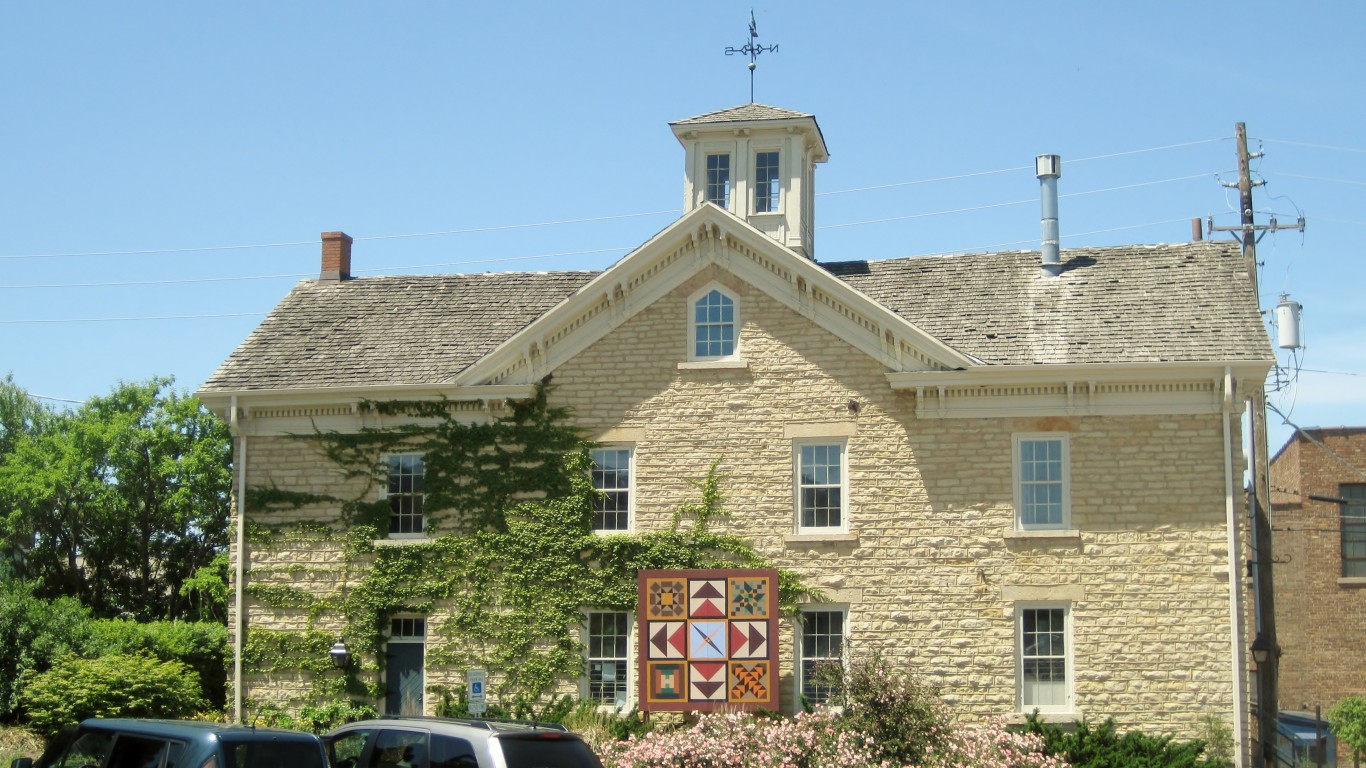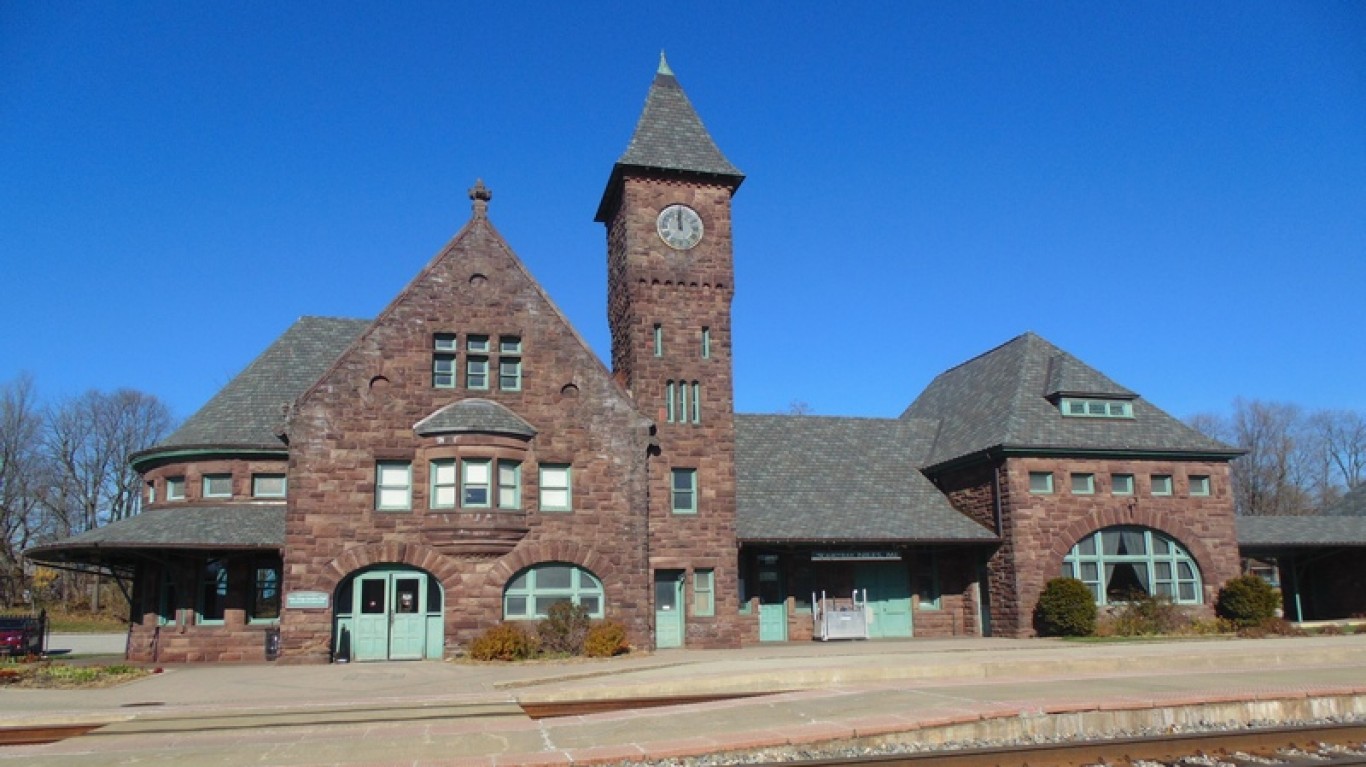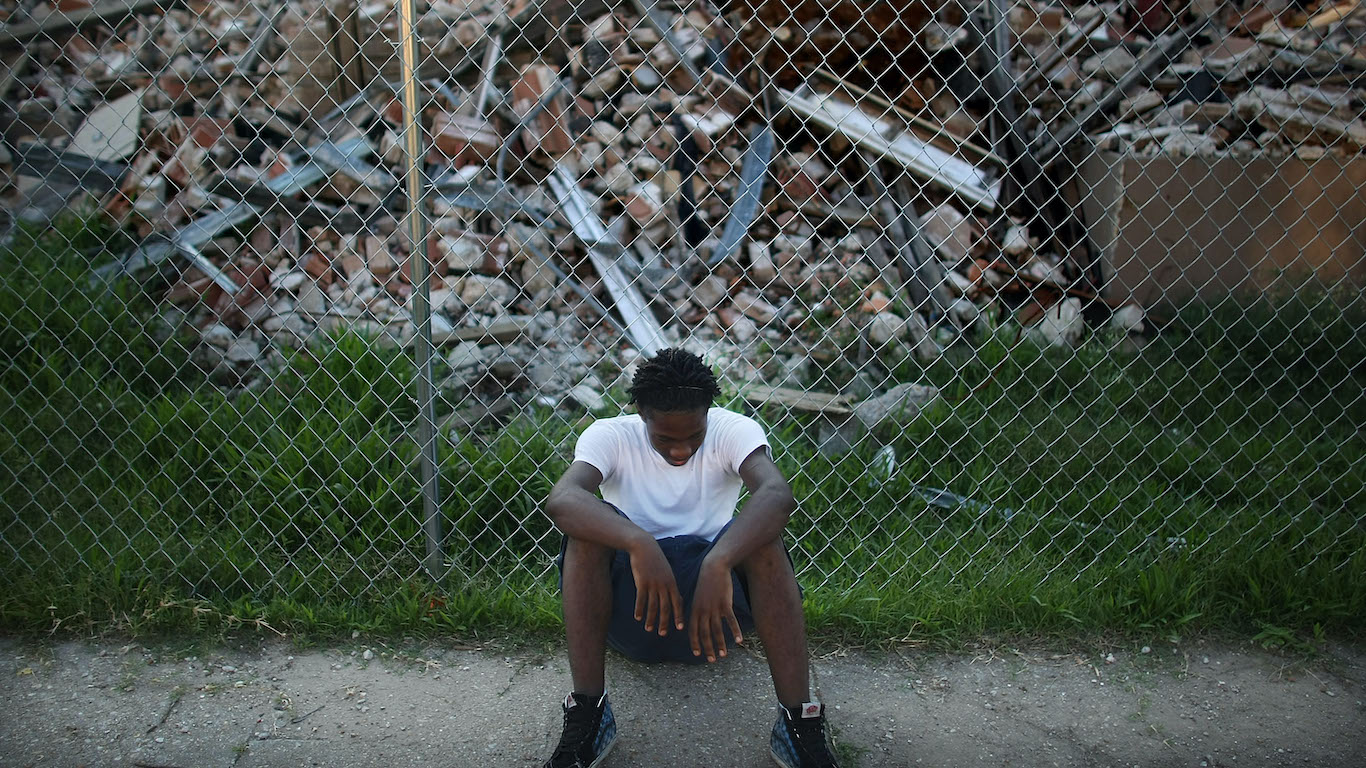
This year marks the 55th anniversary of the 1964 Civil Rights Act, the landmark legislation outlawing racial segregation and other forms of discrimination on the basis of race, color, religion, sex, or national origin.
While there has been substantial progress over the 50 years since the civil rights era, racial disparities persist or have worsened in some of America’s largest cities.
The Civil Rights Act of 1964 and the Fair Housing Act of 1968 banned discriminatory lending, zoning, and renting practices — addressing but not undoing segregation and racial disparities that remain unchanged in many cities and neighborhoods. Here are the most segregated cities in America.
Segregation often limits access to education and employment opportunities for residents of minority communities and contributes to racial disparities in urban areas. For more on residential segregation, see our analysis of the worst congressional districts for black Americans.
To determine the 15 worst cities for black Americans, 24/7 Wall St. ranked the nation’s metropolitan areas based on racial disparities in income, education, health, incarceration, and white-black achievement gaps in other socioeconomic outcomes using data from the U.S. Census Bureau, the Centers for Disease Control and Prevention, and the Bureau of Justice Statistics.
Click here to see the worst cities for black Americans
Click here to see our full methodology
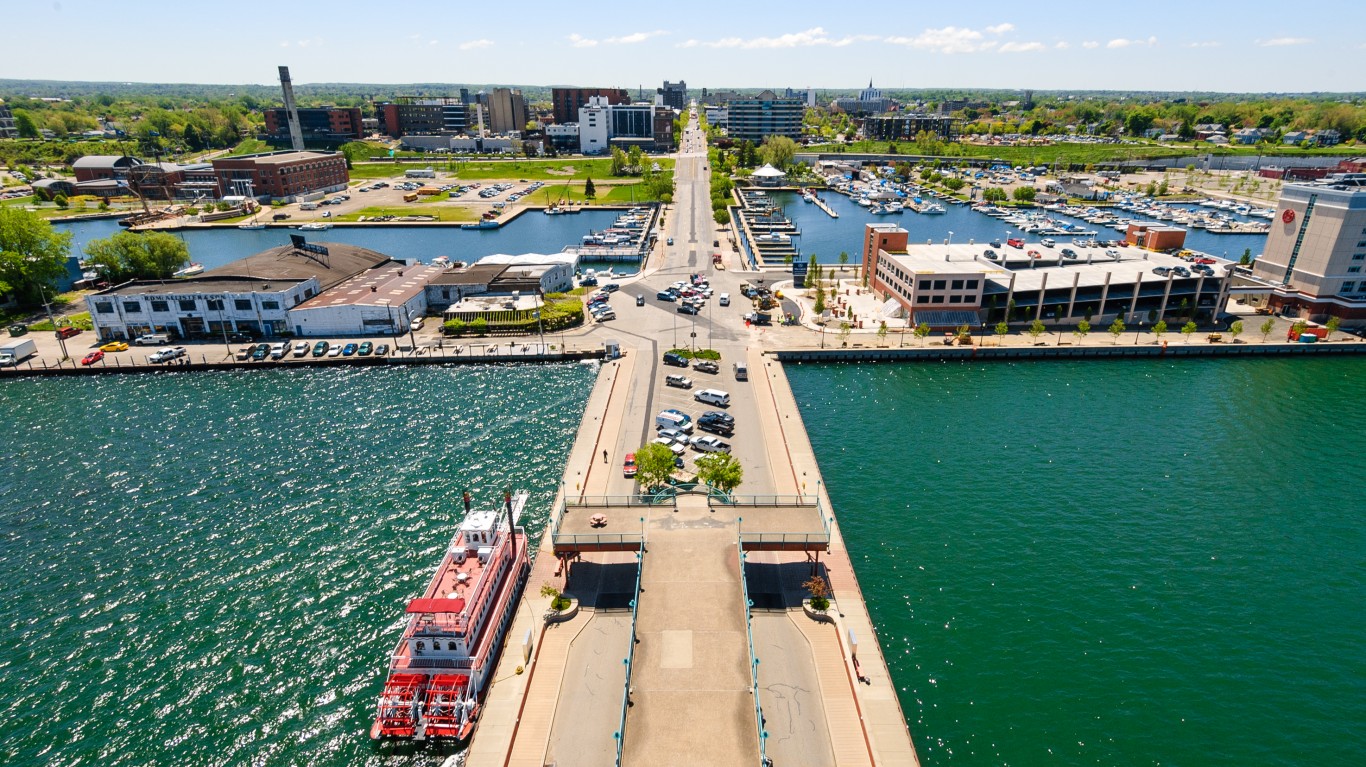
15. Erie, PA
> Black population: 18,859 (6.8%)
> Black median income: $23,074 (45.5% of white income)
> Unemployment: 13.5% (black); 5.8% (white)
> Homeownership rate: 29.3% (black); 69.6% (white)
Erie, Pennsylvania is a metro area of approximately 278,000 residents on the south shore of Lake Erie. Due to the large disparities between black and white residents in terms of income, health, and other socioeconomic measures in the city, Erie ranks as one of the worst cities for black Americans.
The typical household with an African American head of household in Erie earns $23,074 a year, roughly $15,000 less than the median income for black households nationwide and less than half the median income of $50,696 for white households in the metro area. Income is one of the largest determinants of health, and in Erie, 1,053 in every 100,000 black residents die every year, a far higher mortality rate than the white mortality rate of 792 deaths per 100,000 white residents in Erie and one of the highest black mortality rates of any U.S. metro area.
[in-text-ad]
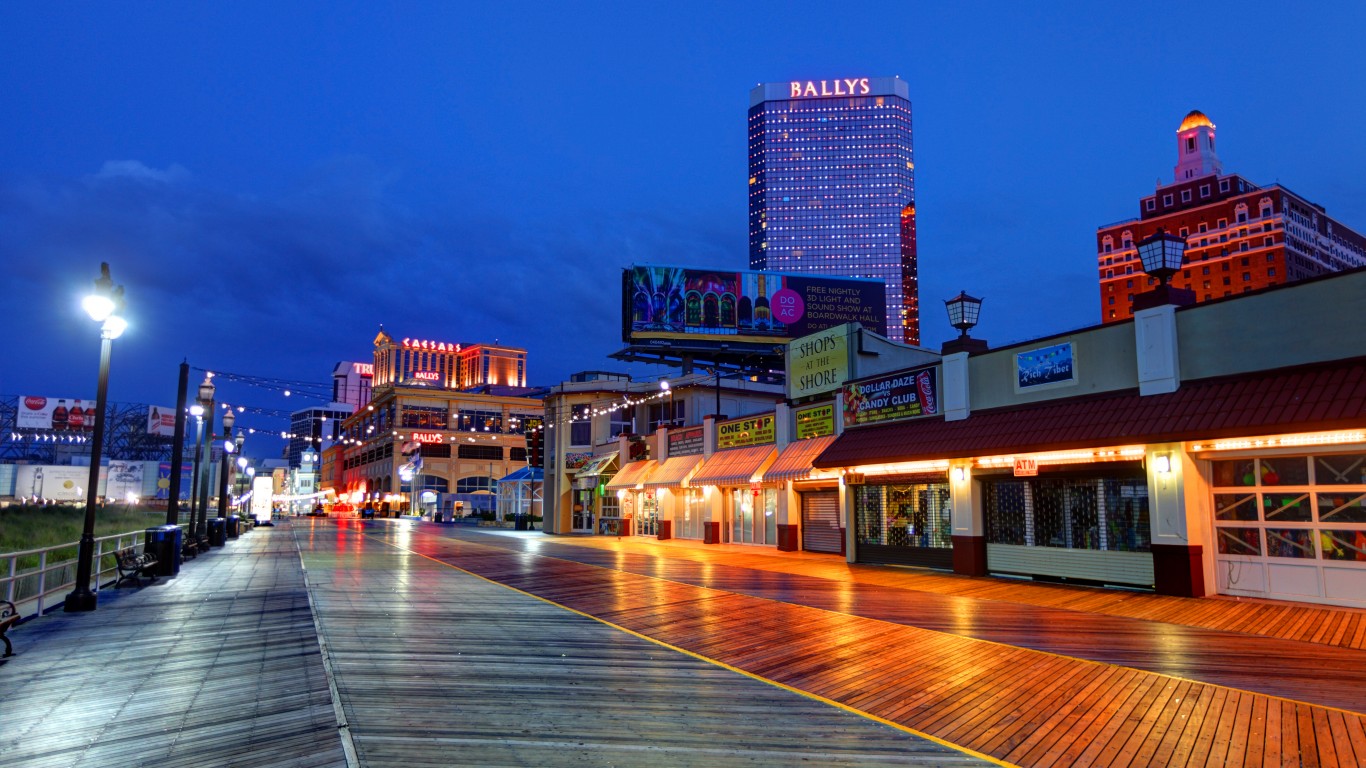
14. Atlantic City-Hammonton, NJ
> Black population: 38,978 (14.3%)
> Black median income: $31,404 (47.3% of white income)
> Unemployment: 16.2% (black); 9.5% (white)
> Homeownership rate: 39.2% (black); 76.0% (white)
The typical black household in Atlantic City earns just $31,404 a year, 47.3% of the median income of $66,419 among white households in the metro area and nearly $7,000 less than the median for black households nationwide. One of the major determinants of income is education, and in Atlantic City, just 12.9% of African American adults have a bachelor’s degree — less than half the corresponding 29.5% white college attainment rate in the metro area.
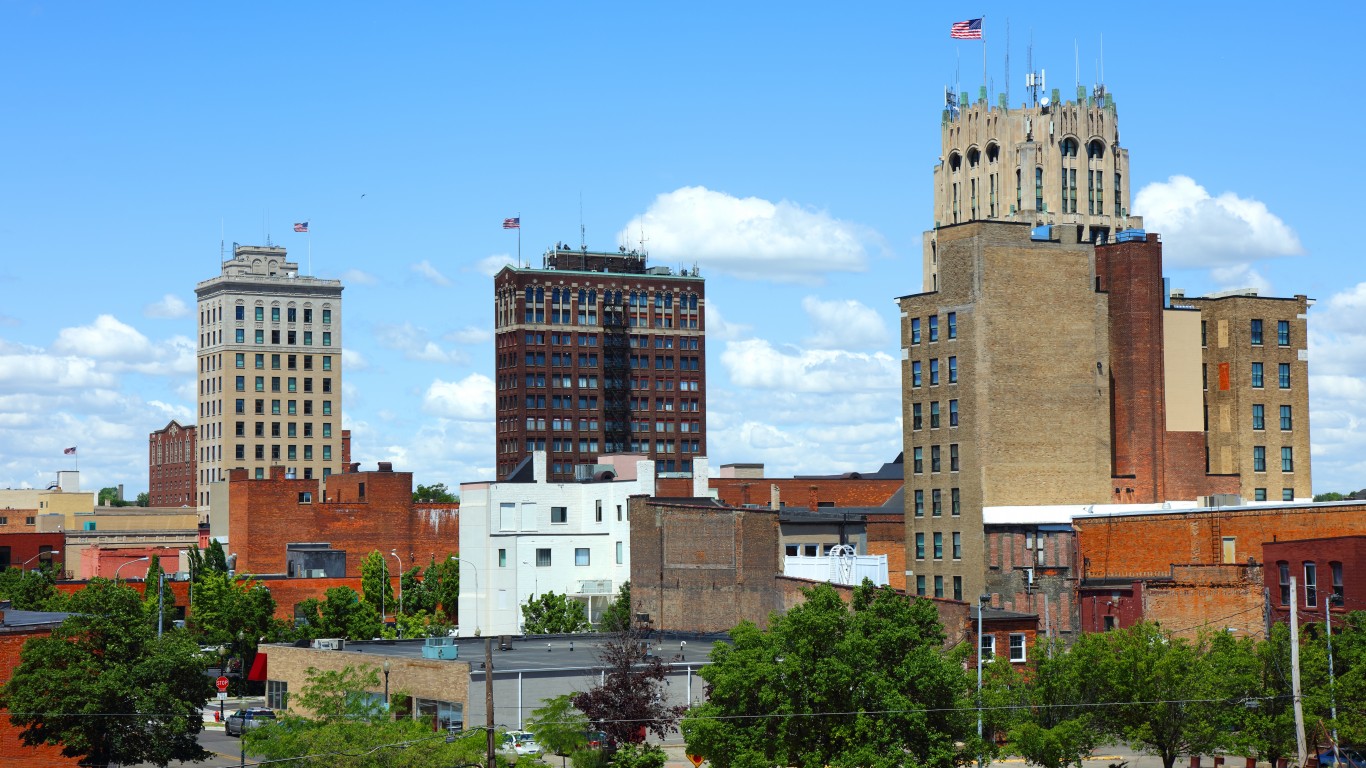
13. Jackson, MI
> Black population: 13,066 (8.2%)
> Black median income: $21,419 (41.3% of white income)
> Unemployment: 18.0% (black); 7.0% (white)
> Homeownership rate: 35.4% (black); 76.0% (white)
Jackson is a relatively small metro area of approximately 159,000 residents located some 70 miles west of Detroit. The typical African American household in Jackson earns just $21,419 a year, 41.3% of the median income of $51,829 among white households and 56.1% of the median income for all black households nationwide. Similarly, while 12.7% of white residents in Jackson live in poverty, 44.0% of black residents do — the 15th largest poverty rate disparity of any metro area.
One factor contributing to the large wealth disparity in Jackson may be the high unemployment disparity. An estimated 18.0% of black members of the labor force in Jackson are unemployed, 11.0 percentage points more than the 7.0% white unemployment rate.
12. Kankakee, IL
> Black population: 16,681 (15.1%)
> Black median income: $29,046 (47.0% of white income)
> Unemployment: 17.3% (black); 5.7% (white)
> Homeownership rate: 33.1% (black); 75.0% (white)
Located approximately 50 miles southwest of Chicago, Kankakee, Illinois, is one of several Rust Belt metro areas where the disparities in education, poverty, and other socioeconomic measures between white and black residents are far greater than the disparities across the nation as a whole. While nationwide, 84.9% of black adults have a high school diploma — 4.4 percentage points less than the 89.3% white high school attainment rate — in Kankakee the 79.1% black high school attainment rate is 11.0 percentage points below the rate of 90.1% among white adults, one of the largest gaps in the country.
High school education correlates strongly with poverty status. In Kankakee, 38.7% of black residents live below the poverty line, more than three times the white poverty rate of 10.4%. Nationwide, the 25.2% black poverty rate is 13.1 percentage points above the 12.0% white poverty rate.
[in-text-ad-2]

11. Syracuse, NY
> Black population: 52,499 (8.0%)
> Black median income: $30,362 (50.6% of white income)
> Unemployment: 15.1% (black); 5.7% (white)
> Homeownership rate: 27.6% (black); 72.3% (white)
Syracuse is one of several metro areas where the decline in manufacturing jobs since the middle of the 20th century has created economic challenges and may have exacerbated racial disparities in income and other socioeconomic measures. Today, some 15.1% of black members of the labor force in Syracuse are unemployed, 9.5 percentage points above the 5.7% white unemployment rate — one of the largest unemployment gaps of any U.S. metro area.
The disparity in unemployment likely contributes to the wide black-white income gap in Syracuse. The typical black household in Syracuse earns $30,362 a year, just 50.6% of the white median household income. Similarly, 37.0% of black residents live in poverty, more than three times the 11.9% white poverty rate.

10. Rochester, NY
> Black population: 117,757 (10.9%)
> Black median income: $29,084 (48.4% of white income)
> Unemployment: 14.8% (black); 5.0% (white)
> Homeownership rate: 31.9% (black); 72.8% (white)
Nationwide, 84.9% of black adults have a high school diploma — 4.4 percentage points below the 89.3% white high school attainment rate. In Rochester, 78.4% of black adults have a high school diploma, 14.0 percentage points below the 92.4% white rate — one of the largest gaps in the country.
People with a high school education are more likely to have higher wages than those without a high school education and are less likely to live in poverty. In Rochester, 34.5% of black residents live in poverty, more than three times the 10.2% white poverty rate. By comparison, nationwide, 25.2% of black Americans live in poverty, over twice the 12.0% white poverty rate.
[in-text-ad]
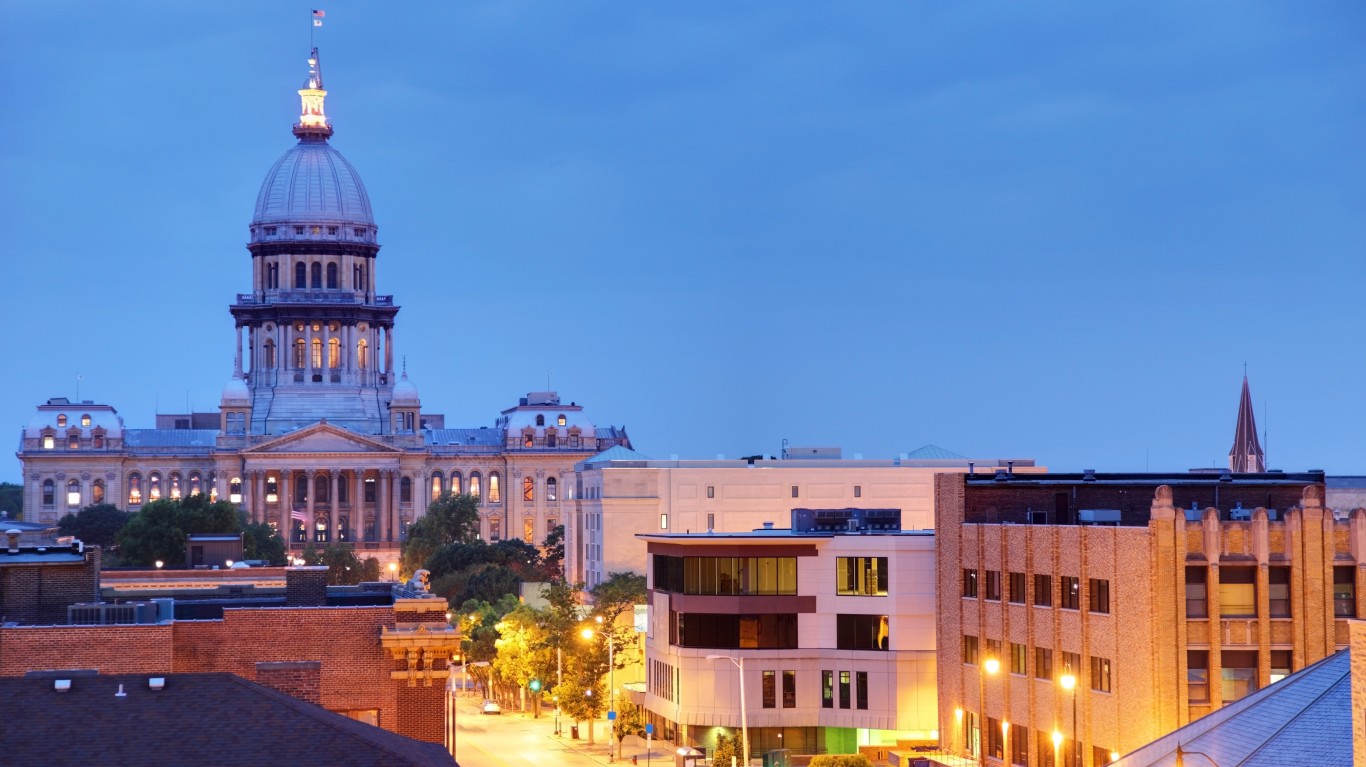
9. Springfield, IL
> Black population: 25,010 (11.9%)
> Black median income: $26,572 (42.0% of white income)
> Unemployment: 16.4% (black); 5.5% (white)
> Homeownership rate: 31.6% (black); 75.2% (white)
Springfield is one of several metro areas in central Illinois where disparities in income, education, and other socioeconomic measures are far greater than disparities across the nation as a whole. The median income for black households in Springfield of $26,572 is just 42.0% of the $63,263 figure for white households, the 18th largest gap of any U.S. metro area.
One factor contributing to the income disparity in Springfield is the large gap in unemployment between white and black members of the labor force. While nationwide the black unemployment rate of 11.9% is 6.3 percentage points above the 5.5% white figure, in Springfield, the black unemployment rate of 16.4% is 10.9 percentage points above the 5.5% white figure — one of the largest disparities of any city in the country.
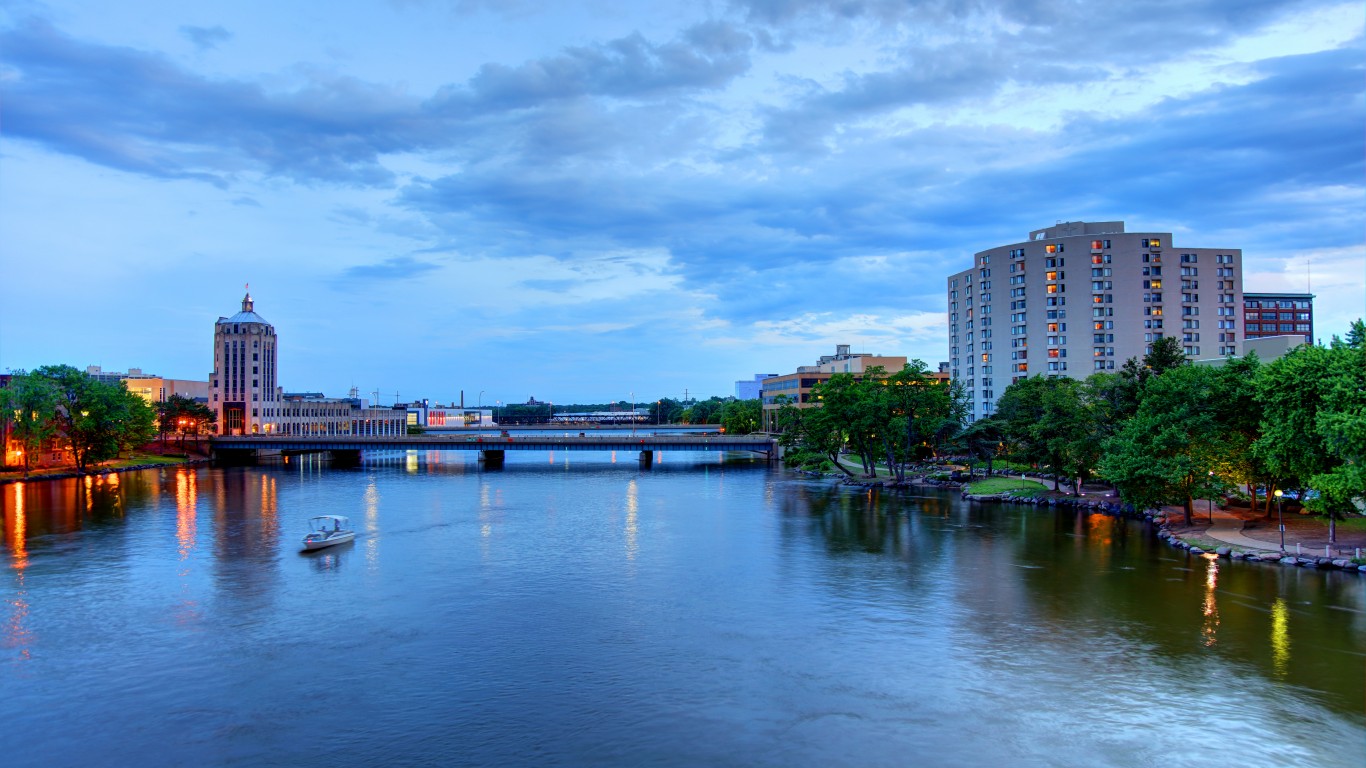
8. Rockford, IL
> Black population: 36,630 (10.7%)
> Black median income: $27,862 (49.7% of white income)
> Unemployment: 23.8% (black); 7.7% (white)
> Homeownership rate: 31.6% (black); 73.1% (white)
Rockford is a small metro area of approximately 341,000 residents located about 80 miles northwest of Chicago. Some 23.8% of black members of the labor force in Rockford are unemployed, the sixth largest share of any metro area and 16 percentage points above the 7.7% white unemployment rate — the ninth largest disparity of any U.S. city.
The gap in unemployment is one of the contributing factors to other racial inequalities in the area. The typical black household in Rockford earns $27,862 a year, less than half the white median household income of $56,026. Similarly, 37.3% of black residents live in poverty, more than three times the 10.3% white poverty rate.
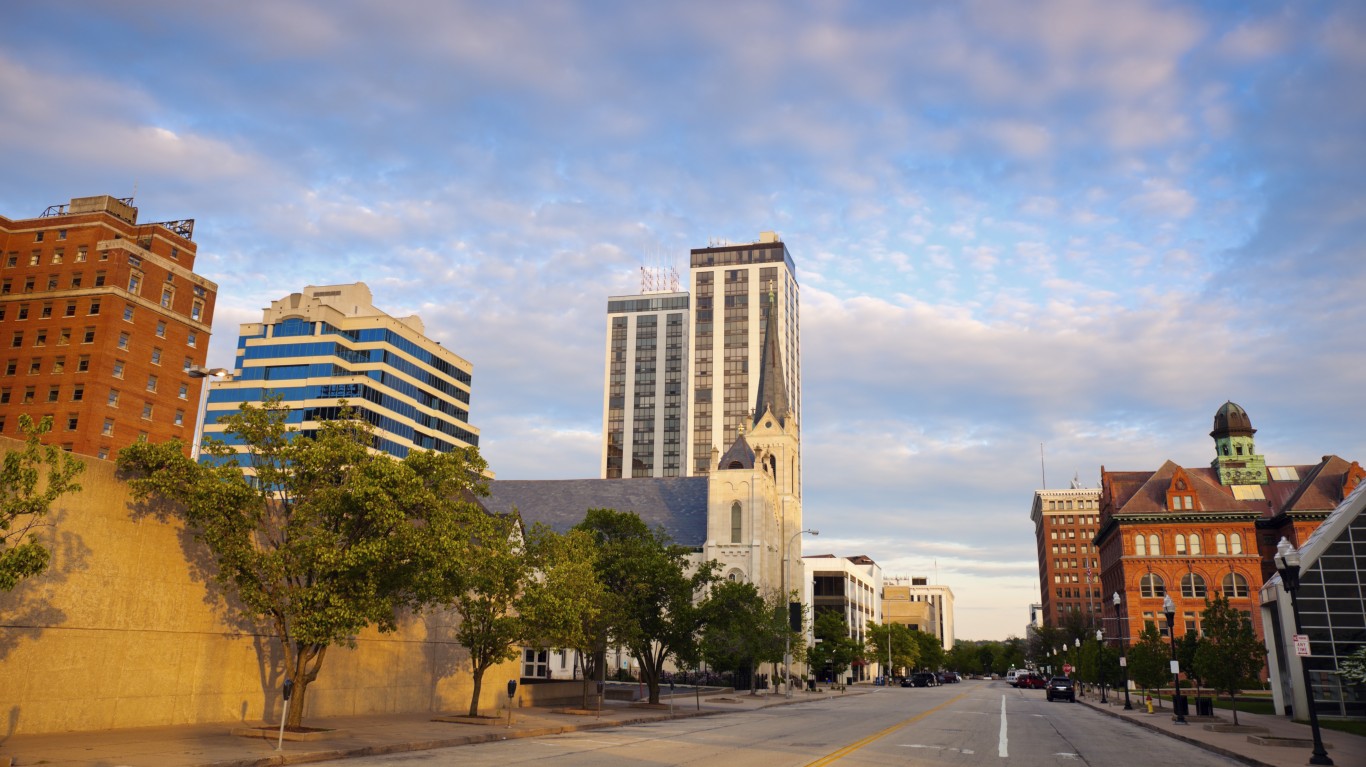
7. Peoria, IL
> Black population: 34,326 (9.1%)
> Black median income: $28,019 (46.4% of white income)
> Unemployment: 18.1% (black); 5.5% (white)
> Homeownership rate: 32.6% (black); 76.1% (white)
While nationwide 84.9% of black adults have a high school diploma — 4.4 percentage points less than the white high school attainment rate of 89.3% — in Peoria, Illinois, 79.6% of black adults have a high school diploma, 13.4 percentage points below the area’s white high school attainment rate of 92.9%. This is one of the largest such gaps in the country. Those without a high school diploma are more likely to struggle financially, and in Peoria, some 34.5% of black residents live below the poverty line, nearly four times the 9.3% white poverty rate in the metro area.
Owning a home is one of the most effective ways of building long-term wealth and avoiding the cycle of poverty. The economic benefits of homeownership are not enjoyed equally In Peoria, where just 32.6% of African American heads of household own their homes — less than half the 76.1% white homeownership rate.
[in-text-ad-2]
6. Niles-Benton Harbor, MI
> Black population: 22,567 (14.6%)
> Black median income: $23,540 (45.2% of white income)
> Unemployment: 17.4% (black); 5.6% (white)
> Homeownership rate: 35.7% (black); 75.6% (white)
Less than 15% of Niles area residents are black, but 47.2% of the black population lives in census tracts where at least half of the population is also black — the fifth highest level of segregation of any U.S. metro area. Like in many of the most segregated cities in America, the segregation in Niles has likely lead to significant differences in employment and education opportunities by race and contributed to the vast racial disparities in the metro area.
The typical African American household in the Niles-Benton Harbor metro area earns $23,540 a year, just 45.2% of the white median household income of $52,032 in the city. Income is one of the main determinants of health, and in Niles, some 1,089 in every 100,000 black residents die every year, far more than the corresponding white mortality rate of 797 deaths per 100,000.
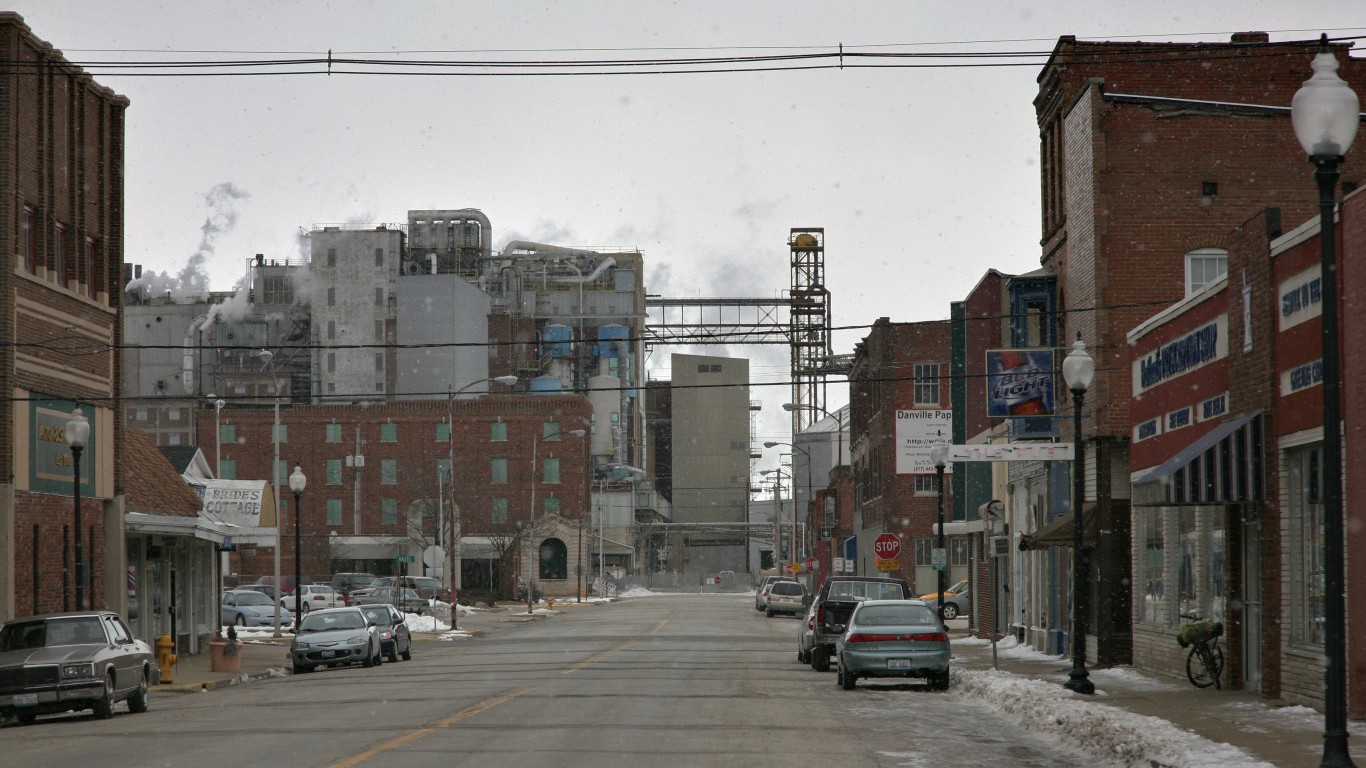
5. Danville, IL
> Black population: 10,995 (13.9%)
> Black median income: $23,963 (49.2% of white income)
> Unemployment: 18.8% (black); 6.9% (white)
> Homeownership rate: 31.7% (black); 75.8% (white)
Just 5.3% of black adults in Danville have a bachelor’s degree. This is the fourth lowest share of all metro areas nationwide, and nearly one-third the 15.4% college attainment rate for white adults in the metro area — itself one of the lowest shares in the nation. Individuals without a college education are far more likely to live below the poverty line than those with a college education, and in Danville 48.3% of black residents live in poverty — the ninth highest poverty rate nationwide and far more than the 15.2% white poverty rate in the metro area.
Poverty status is one of the largest determinants of health and longevity, and in Danville, health outcomes are far worse for the black population than the white population. For every 100,000 black residents in Danville, 1,208 die each year, the third highest black mortality rate nationwide. The white mortality rate in the area is 923 deaths per 100,000 white residents.
[in-text-ad]
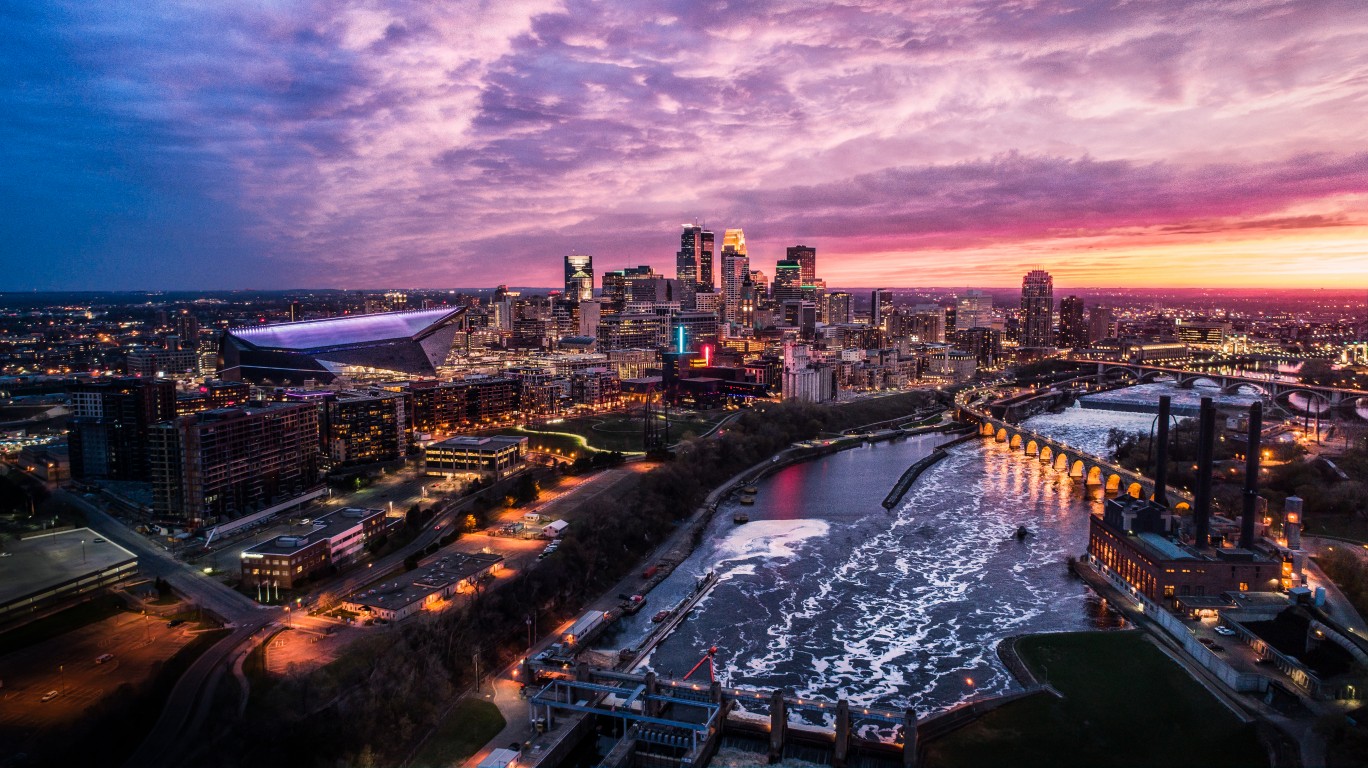
4. Minneapolis-St. Paul-Bloomington, MN-WI
> Black population: 278,802 (7.9%)
> Black median income: $34,174 (43.4% of white income)
> Unemployment: 10.3% (black); 3.6% (white)
> Homeownership rate: 25.4% (black); 75.3% (white)
While white residents of the Twin Cities metro area are better off than white Americans nationwide in a number of measures, the area’s black population is worse off by several metrics compared to the black population nationwide. The typical white household in Minneapolis, for example, earns $78,706 a year, over $17,000 more than the $61,363 national figure. Meanwhile, the typical black household in Minneapolis earns $34,174 a year, 43.4% of the median for white household and $4,000 less than the median among black households nationwide.
Similarly, while 95.9% of white adults in Minneapolis have a high school diploma — the largest share of any city in the country — just 82.2% of black adults in the metro area do, below the 84.9% national black high school attainment rate.
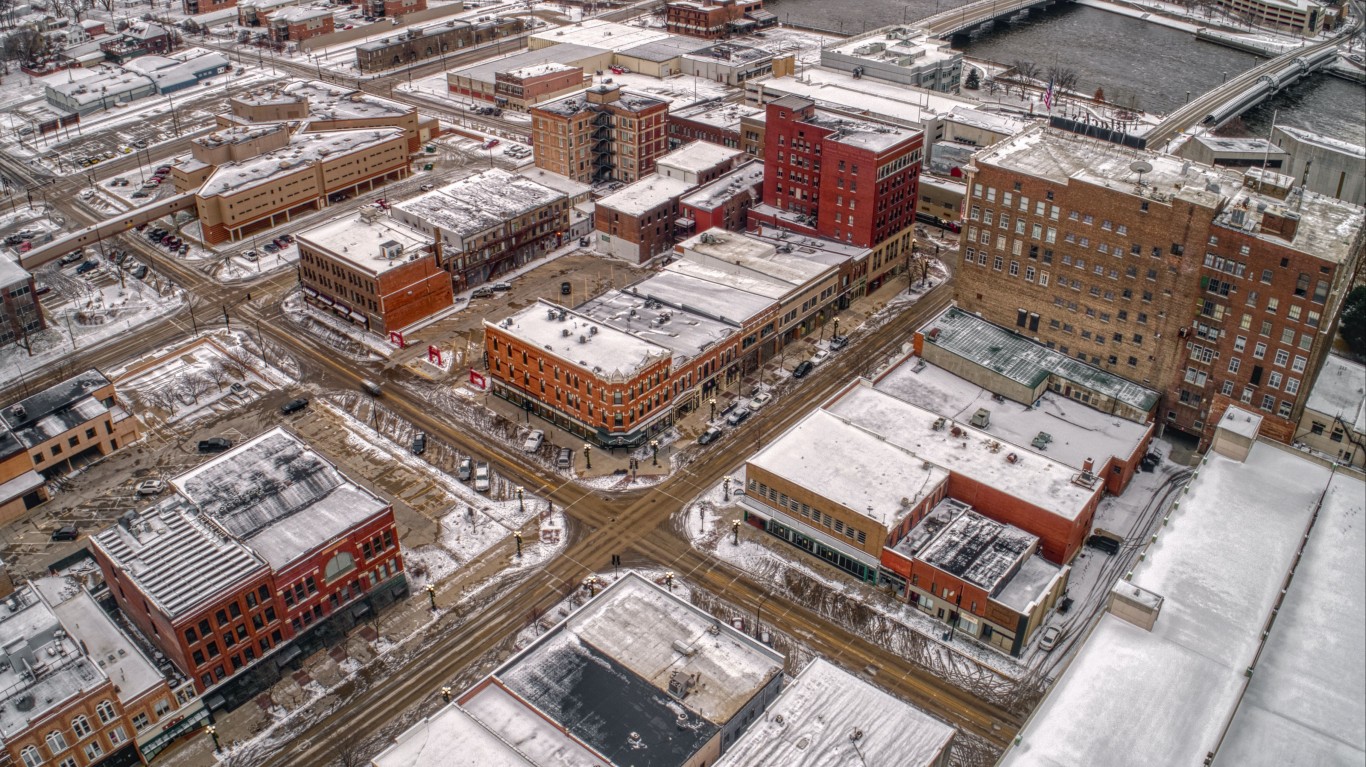
3. Waterloo-Cedar Falls, IA
> Black population: 12,074 (7.1%)
> Black median income: $27,811 (49.2% of white income)
> Unemployment: 19.7% (black); 4.0% (white)
> Homeownership rate: 34.4% (black); 72.3% (white)
While 84.9% of black adults nationwide have a high school diploma — 4.4 percentage points less than the 89.3% white high school attainment rate — in the Waterloo-Cedar Falls metro area 80.2% of black adults have a high school diploma, 13.4 percentage points below the 93.6% white attainment rate, one of the largest gaps in the country.
Individuals without a high school education are far more likely to be unemployed than those with greater educational attainment. In the Waterloo-Cedar Falls area, 19.7% of black members of the labor force are unemployed, 15.7 percentage points above the 4.0% white unemployment rate. By comparison, the black unemployment rate nationwide of 11.9% is 6.3 percentage points higher than the 5.5% white figure.

2. Racine, WI
> Black population: 20,797 (10.7%)
> Black median income: $27,658 (43.4% of white income)
> Unemployment: 13.1% (black); 5.1% (white)
> Homeownership rate: 30.6% (black); 74.8% (white)
Just 7.4% of black adults in Racine have a bachelor’s degree — the 12th smallest share of any metro nationwide and 19.3 percentage points less than the 26.7% college attainment rate for white adults in the metro area. Individuals without a bachelor’s degree are more likely to live below the poverty line than those with a college education, and in Racine, 30.8% of black residents live in poverty, nearly four times the corresponding white poverty rate of 8.7%.
Owning a home is one of the most effective ways for families to build long-term wealth and avoid the cycle of poverty. In Racine, just 30.6% of African American heads of household own their homes — less than half the 74.8% white homeownership rate.
[in-text-ad-2]
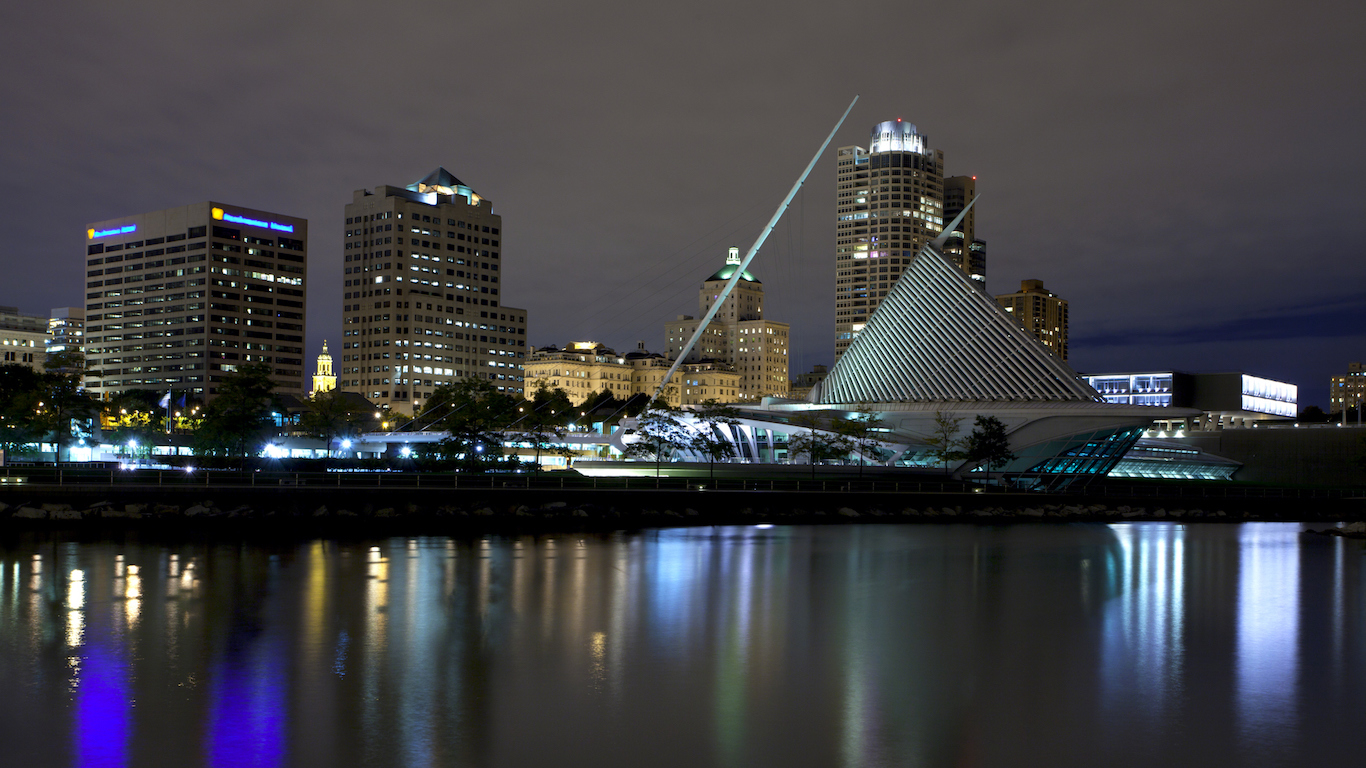
1. Milwaukee-Waukesha-West Allis, WI
> Black population: 257,895 (16.4%)
> Black median income: $28,928 (43.8% of white income)
> Unemployment: 13.9% (black); 3.9% (white)
> Homeownership rate: 27.8% (black); 68.2% (white)
Milwaukee is one of the many Rust Belt cities where a history of redlining, exclusionary zoning, and discriminatory lending practices has contributed to segregation — that remains today — and to some of the largest racial disparities in income, health, and other socioeconomic measures in the country. While nationwide some 16.8% of black Americans live in predominantly black neighborhoods, 35.2% of black Milwaukee residents do — the 20th largest share of any metro area.
The typical black household in Milwaukee earns just $29,928 a year, 43.8% of the median income of $66,097 among white households. Income is one of the primary correlates of health and longevity, and in Milwaukee, 1,020 in every 100,000 black residents die every year — over 300 more deaths per 100,000 than the white mortality rate, one of the largest disparities nationwide.
Methodology
To determine the 15 worst cities for black Americans, 24/7 Wall St. created an index consisting of eight measures to assess race-based gaps in socioeconomic outcomes in each of the nation’s metropolitan areas. Creating the index in this way ensured that cities were ranked on the differences between black and white residents and not on absolute levels of socioeconomic development.
For each measure, we constructed an index of the gaps between black and white Americans. The index was standardized using interdecile normalization so outliers in the data did not skew results. We excluded metro areas where black residents comprised less than 5% of the population or where data limitations made comparisons between racial groups impossible.
Within the index, we considered 2017 data from the U.S. Census Bureau’s American Community Survey on median household income, poverty, adult high school and bachelor’s degree attainment, homeownership, and unemployment rates for each racial group. All ACS data are five-year estimates.
Data on incarceration by race are for 2017 and came from the Bureau of Justice Statistics. These statistics were adjusted for population using one-year ACS data. Because states, rather than metro areas, are responsible for the prison population, incarceration rates are for the state where the metro area is located.
If a metro area spans more than one state, we used the state in which the metro area’s principal city is located. Using data on age-adjusted mortality rates by race for each U.S. county from 2013-2017 from Centers for Disease Control and Prevention and boundary definitions from the Census Bureau, we calculated mortality rates at the metro level. Incarceration and mortality rates are per 100,000 residents.
Take Charge of Your Retirement In Just A Few Minutes (Sponsor)
Retirement planning doesn’t have to feel overwhelming. The key is finding expert guidance—and SmartAsset’s simple quiz makes it easier than ever for you to connect with a vetted financial advisor.
Here’s how it works:
- Answer a Few Simple Questions. Tell us a bit about your goals and preferences—it only takes a few minutes!
- Get Matched with Vetted Advisors Our smart tool matches you with up to three pre-screened, vetted advisors who serve your area and are held to a fiduciary standard to act in your best interests. Click here to begin
- Choose Your Fit Review their profiles, schedule an introductory call (or meet in person), and select the advisor who feel is right for you.
Why wait? Start building the retirement you’ve always dreamed of. Click here to get started today!
Thank you for reading! Have some feedback for us?
Contact the 24/7 Wall St. editorial team.
 24/7 Wall St.
24/7 Wall St.